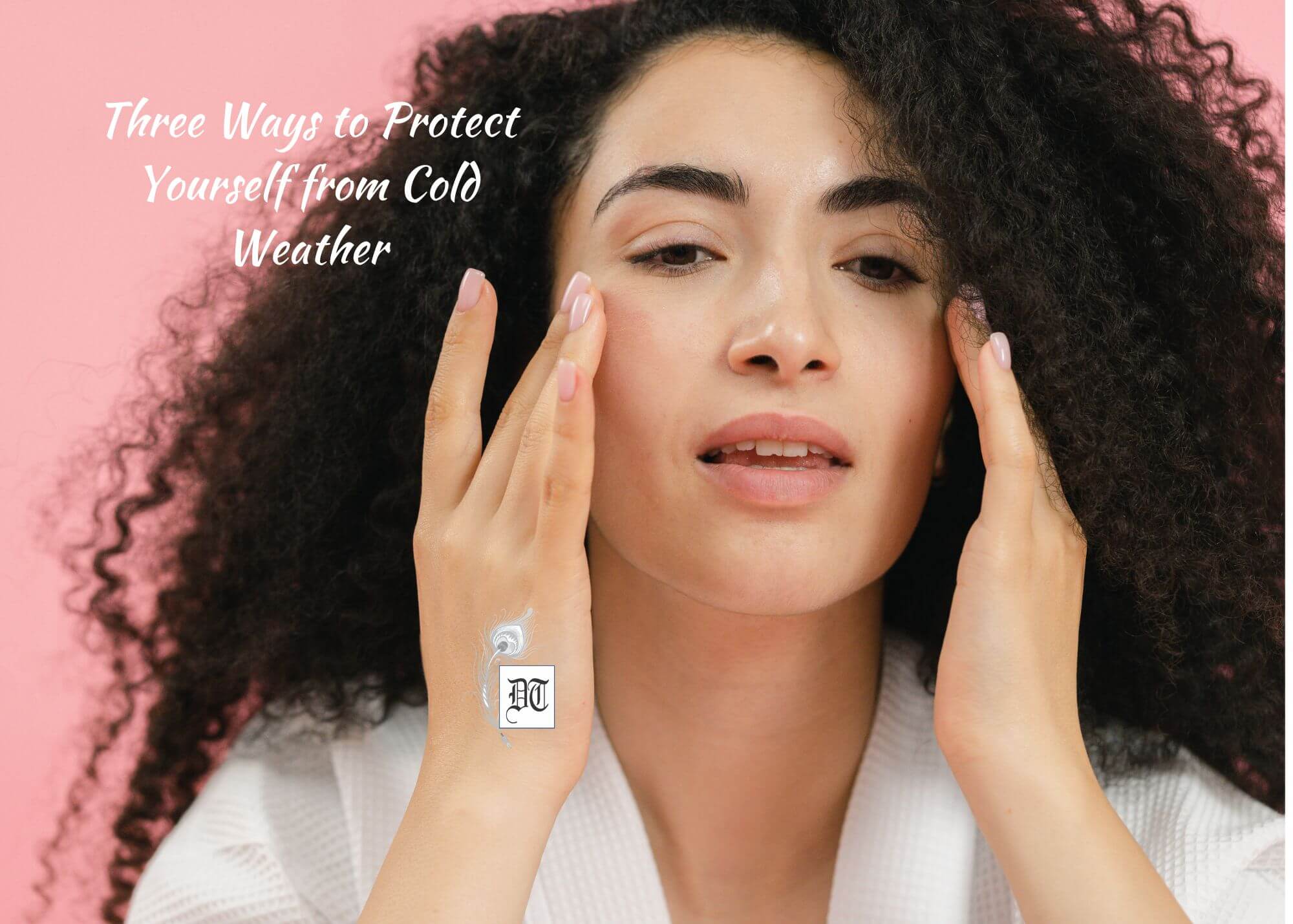The post-war (World Wars) plastic surgery boom and the breaking down of traditional reluctance to undergo plastic surgery, particularly middle-aged, middle-class women, who were affluent and largely finished with raising families. This demographic felt increasing pressure to remain young in a post-war culture often dubbed the “cult of the body beautiful”. Shameena examines the demand for looking beautiful, in the third and final part, in the weekly column, exclusively in Different Truths.
Several factors contributed to the post-war (World Wars) plastic surgery boom and the breaking down of traditional reluctance to undergo plastic surgery. First, continued activity of professional organisations and publications helped further legitimise the industry. In addition, after there were no wars to generate patients, surgeons consequently began a widespread trend toward marketing surgical techniques towards particular groups – particularly middle-aged, middle-class women, who were affluent and largely finished with raising families.
Developments in Cosmetic Surgery
Furthermore, this demographic felt increasing pressure to remain young in a post-war culture often dubbed the “cult of the body beautiful” (Gilman 1999). Indeed, plastic surgeons would often use the vocabulary of postwar domesticities – such as sewing, housecleaning, and cooking – to refer to their procedures. Some critics even accused surgeons of inventing new names, such as “bat wing deformity” (the flabby skin on the upper arms) or “spare tire deformity” (protrusion of the lower abdomen) to create a need for plastic surgery that might not otherwise exist (ibid). By the 1960s, plastic surgery was fully integrated into the medical establishment.
Gradually, cosmetic surgeons also learned new ways to augment the breast shape and size in women. Uplifting the breasts through specially designed outfits was already famous during that time. Many women then used corsets and brassieres to enhance the look of their breasts. In the 19th century, surgeons first performed the breast enlargement procedure by using artificial implants made from rubber, paraffin, ivory, and glass. Reconstructive breast surgery was first done by Czerny in 1895. He performed the first successful mammary reconstruction on an actress who had undergone a cancerous surgery and removal of a breast tumour. Later in 1903, Charles Miller introduced the breast augmentation surgery in the USA. He used silk floss and silk, celluloid and many other foreign materials for breast implants. However, the results were not satisfying.
a breast tumour. Later in 1903, Charles Miller introduced the breast augmentation surgery in the USA. He used silk floss and silk, celluloid and many other foreign materials for breast implants. However, the results were not satisfying.
Silicone breast implants also grew in popularity during the 1960s. Showgirls would inject their breasts with liquid silicon, a substance initially used in Japan in WWI to plump out legs withered by polio. Injecting liquid silicone, however, often had dangerous side effects, such as amputation of the breasts due to infection and guaranteed “pendulous” breasts by the time women were 40. Yet advances in silicone breast augmentation (which later was made available in sac), gave hope to women who had undergone a mastectomy (Haiken 1997).
Breast Reduction
Breast reduction, also known as reduction mammaplasty, is a procedure to remove excess breast fat, glandular tissue and skin to achieve a breast size in proportion with your body and to alleviate the discomfort associated with overly large breasts.
Breast Reduction is considered when large, heavy breasts causing back, shoulder & neck pain, poor posture, bra-strap indentations, and rashes under breast creases. Excessive breast size may also decrease a sense of attractiveness and self-confidence.
Liposuction of the Breasts often called the scarless breast reduction is performed through two small 1.0 cm incision on each side of the breast crease. Because the breast tissue is composed primarily of fatty tissue, liposuction can be used to remove this fatty tissue component and promote skin contraction after surgery. This is an ideal option in younger patients with a mild degree of low nipple position and a good skin envelope without significant skin stretch or stretch marks. Liposuction only for the reduction of the breasts is ideal for patients seeking a reduction to one to two cup sizes as well. On average, 500-1000 cc from each breast is removed. Due to more conservative removal; skin contraction and mild elevation of  the nipple are anticipated without the more traditional incisions required for skin tightening and lifting of the nipple. The results are permanent. Liposuction typically does not interfere with nipple sensation or the ability to breastfeed. The patients have a more limited recovery pain but are required to wear compression with an ace wrap following surgery for 2-4 weeks. The patients are also recommended to perform external ultrasound massage to the breasts following surgery to decrease the areas of firmness and to reduce the swelling.
the nipple are anticipated without the more traditional incisions required for skin tightening and lifting of the nipple. The results are permanent. Liposuction typically does not interfere with nipple sensation or the ability to breastfeed. The patients have a more limited recovery pain but are required to wear compression with an ace wrap following surgery for 2-4 weeks. The patients are also recommended to perform external ultrasound massage to the breasts following surgery to decrease the areas of firmness and to reduce the swelling.
The SPAIR technique is a recent advancement in breast reduction procedures that can allow for a prettier breast by decreasing lateral (outer) fullness and creating a more natural looking breast shape, while at the same time decreasing the incisions on the breasts. The incision with the SPAIR technique is around the nipple-areolar complexes (pigmented region around the nipples) with a vertical incision down (like a lollipop). Sometimes the incision is also placed in the fold of the breast crease. The nipple-areolar complex is decreased in size and is repositioned in a central location. It uses a permanent purse string suture around the areola to maintain the diameter long term; this suture is the only permanent suture placed for a breast reduction surgery. The nipple-areolar complex is not removed but the skin is tightened around the breast mound. The nipple is not removed and nipple sensation is preserved. Excess breast tissue, fat, and skin are then removed to the desired cup size and the skin envelope is tightened creating a “perkier” breast shape with significantly less breast volume. The breast reduction surgery is able to preserve nipple sensation and the ability to breastfeed following surgery.
The patients who smoke are required to stop smoking a minimum of six months prior to surgery to ensure adequate healing and decrease the risk of complications related to decreased blood flow to the incisions after surgery. Smoking has been shown in the literature to reduce the blood flow to the incisions by at least 30%, significantly contributing to complications.
Breast Implants: Saline vs. Silicone
Saline and silicone breast implants both have an outer silicone shell. The implants differ in material and consistency, however. Saline implants are filled with sterile salt water. They’re inserted empty and then filled once they’re in place. Saline breast implants are available to women 18 and older for breast augmentation and to women of any age for breast reconstruction.
Silicone implants are pre-filled with silicone gel — a thick, sticky fluid that closely mimics the feel of human fat. Most women feel that silicone breast implants look and feel more like natural breast tissue. Silicone breast implants are available to women 22 and older for breast augmentation and to women of any age for breast reconstruction.
Saline and silicone breast implants pose similar risks, including:
- Scar tissue that distorts the shape of the breast implant (capsular contracture)
- Breast pain
- Infection
- Changes in nipple and breast sensation, usually temporary
- Implant leakage or rupture
Correcting any of these complications might require additional surgery, either to remove or replace the implants.
If a saline breast implant ruptures, the implant will deflate — causing the affected breast to change in size and shape. The leaking saline solution will be absorbed by your body without posing any health risks, but you’ll probably need surgery to remove the silicone shell. If you wish, a new implant can likely be inserted at the same time.
If a silicone breast implant ruptures, you might not notice right away — or ever — because any free silicone tends to remain trapped in the fibrous tissue (capsule) that forms around the implant. This is known as a silent rupture.
Leaking silicone gel isn’t thought to cause systemic or long-term health problems — such as breast cancer, reproductive problems or connective tissue disease, such as rheumatoid arthritis. Still, a ruptured silicone breast implant might eventually cause breast pain or changes in the contour or shape of the breast.
Penile Enhancement
If penis size really is an issue, it seems to matter more to men than to women. This sense of male insecurity is only likely to increase in the wake of Internet porn. That’s because research shows that more than a third of men who incorrectly believe their penises are too small say their insecurity began by viewing erotic images during their teen years.
Penis girth surgery is some surgical techniques to increase penis girth involve injecting fat taken from another part of the body into the penis. Some studies have reported increases in the circumference of 1.4 to 4cm. However, studies that followed men up over a longer time suggest disappointing results, with complications including disfigurement, scarring, lumpiness, and infection. Another method, still in its experimental stage, involves pulling back the skin of the penis to wrap a tube-like biodegradable frame filled with tissue cells around the shaft.
Penis length surgery is the most common technique involves cutting the ligament that attaches the penis to the pubic bone and performing a skin graft at the base of the penis to allow for the extra length. The surgery can result in an average gain in length to the flaccid penis of 2cm, but there will be no change to the size of the erect penis. Furthermore, the erect penis won’t point as high as before the operation because the ligament which was cut no longer offers support.
For men with a large gut, liposuction, a surgical procedure to remove fat below the abdomen, can make their penis look larger. Removing excess fat around the pubic area can make a partly buried penis appear more prominent.
Some non-surgical treatment for Penile Enhancement are:
Vacuum devices: Penis pumps involve placing a tube over the penis and then pumping out the air to create a vacuum. The vacuum draws blood into the penis and makes it swell. Vacuum devices are sometimes used in the short-term treatment of impotence. But overusing a penis pump can damage the tissue of the penis, leading to weaker erections.
Penile extenders: This technique involves placing a weight or a small extending frame, sometimes called a traction device, on the flaccid penis to stretch it. There is no clinical evidence that using weights will extend the penis, and they may cause permanent damage to the penis. However, better results have been reported with traction devices.
Jelqing is an exercise involving repeatedly pulling the flaccid penis using the thumb and index finger, with the aim of increasing erection size. The idea is that the pulling exercises will increase the blood capacity of the penis’ erectile tissue, allegedly resulting in increased length and girth of the penis.
Lip Augmentation
Lip augmentation comes in many forms and is a very popular procedure nowadays. The main distinction  is between the surgical and non-surgical lip augmentation. Even though they are pretty standard procedures, there are still some risks involved. It is a cosmetic procedure that can give you fuller, plumper lips. These days, an injectable dermal filler is the most commonly used method of lip augmentation.
is between the surgical and non-surgical lip augmentation. Even though they are pretty standard procedures, there are still some risks involved. It is a cosmetic procedure that can give you fuller, plumper lips. These days, an injectable dermal filler is the most commonly used method of lip augmentation.
There are many types of dermal fillers that can be injected in your lips and around your mouth. But the most common fillers today are products that contain substances similar to hyaluronic acid. Hyaluronic acid is a natural substance found in the body. It helps increase volume in your lips. These types of dermal fillers are sometimes called “hyaluronic acid fillers.”
lip fillers fall under the non-surgical procedures. They offer a non-invasive solution, without any scars or stitching, yet with instant successful results. Another advantage of lip fillers is that they require no recovery period and you can get back to your normal routine within hours. Within hours you get more attractive and bigger lips and increased self-esteem. Fat and collagen injections are the two most common kinds of fillers. The fat in fat fillers is taken from your own body so there are no greater side effects. In comparison with the surgical procedures, lip fillers are much more affordable.
Pros and Cons of Surgical Lip Augmentation
A major downside of the fillers is that the results they offer last for only six to eight month, some even shorter than that. If done improperly, and the surgeon does not distribute the injected filler evenly in the lips, this procedure can leave you with lumpy lips, or you can even get a not-so-sexy lopsided smile. Allergic reactions to fillers, albeit rarely, still occur. Especially when collagen injections are used because collagen comes from animal sources. You can experience redness, irritation, and itching, but it will go away. Still, it is recommended to do an allergy test before the procedure to avoid any side effects.
Surgical lip augmentation provides permanence, meaning that you do it only once and the results last a lifetime. This procedure involves placing synthetic implants into the lips. The high-end implants provide a natural feel to the lips and you will not see them as foreign bodies. Since these implants come in many shapes and sizes, you can actually choose the lips that best suit your personality and your wishes. What can boost your confidence better than getting the lips you have always dreamed of? Also, the surgery is a low-risk one and the recovery lasts only for a week. This may sound a bit corny, but plumper lips will get you many new friends and wooing. Some patients even reported increased libido and having a better sex life after lip augmentation.
can boost your confidence better than getting the lips you have always dreamed of? Also, the surgery is a low-risk one and the recovery lasts only for a week. This may sound a bit corny, but plumper lips will get you many new friends and wooing. Some patients even reported increased libido and having a better sex life after lip augmentation.
Pain is the most loyal companion of almost all surgical procedures. Although the pain, in this case, is temporary, you might feel discomfort for weeks. We have already mentioned that this is a one-time thing with permanent results. This is a good thing if you are satisfied with these results. But if the surgery goes wrong for any reason, you will be stuck with comic appearance or will need to undergo other surgical procedures to repair the damage. Bear in mind that scarring is an inevitable element of any surgery. Finally, surgical lip augmentation costs a pretty penny. If you do not have a substantial budget, maybe lip fillers should be your first choice.
Throughout its history, plastic surgery has been shaped by cultural priorities and pressures that illuminate the complex interplay between the cosmetic and reconstructive. The fact that many Western societies today have become more comfortable with plastic surgery suggests that they view it as another method of self-improvement–not just for women, but men as well.
A select number of medical boards and associations (such as the American Academy of Cosmetic Surgery, founded in 1985) were formed and sanctioned to provide continuity of care and research along with a network of medical providers working in the field of medical plastic and cosmetic surgery. Such organisations have stringent membership requirements that require significant continuing medical education to stay abreast of recent advancements in technology, procedures, and safety. Choosing a cosmetic surgical specialist with board credentials and associations membership better assures patients that they’re receiving care from an approved and properly trained specialist.
While critics warn that plastic surgery is creating the world where beauty standards are brutally conformist, plastic surgeons today implement an exciting array of technological advances that continue to push the boundaries of their industry. For example, surgeons are researching new fillers that last longer and new lasers that inject “energy” into the skin. They are also exploring the potential of cloning technology as a method of body rejuvenation.
[Concluded]
©Shameena Abdurahiman
Photos from the Internet.
#FashionFunda #PlasticSurgery #Enhancement #ReductionOfBreast #BreastAugmentation #PenisEnhancement #LipAugmentation #RisksOfAugmentation #ThingToCheckBeforeAugmentation #CosmeticSurgery #InstitutesOfCosmeticSurgery #DifferentTruths







 By
By